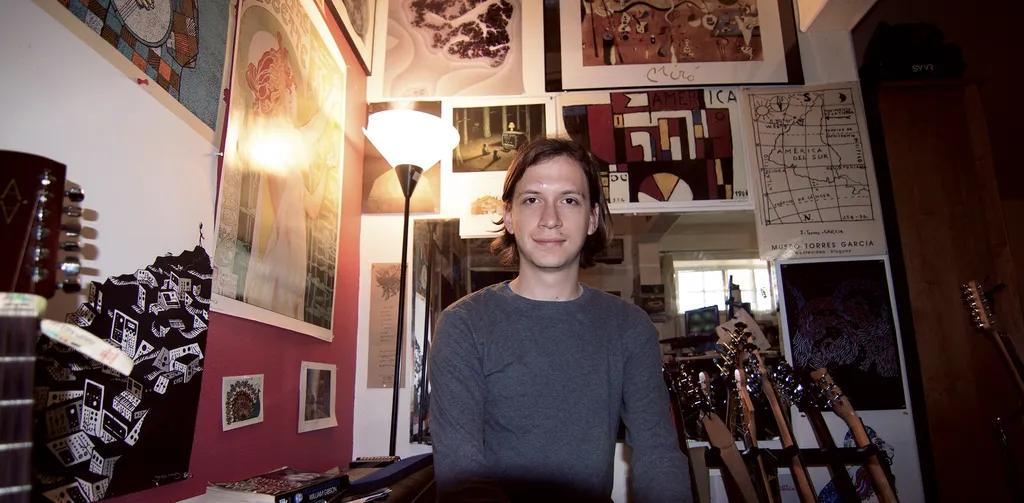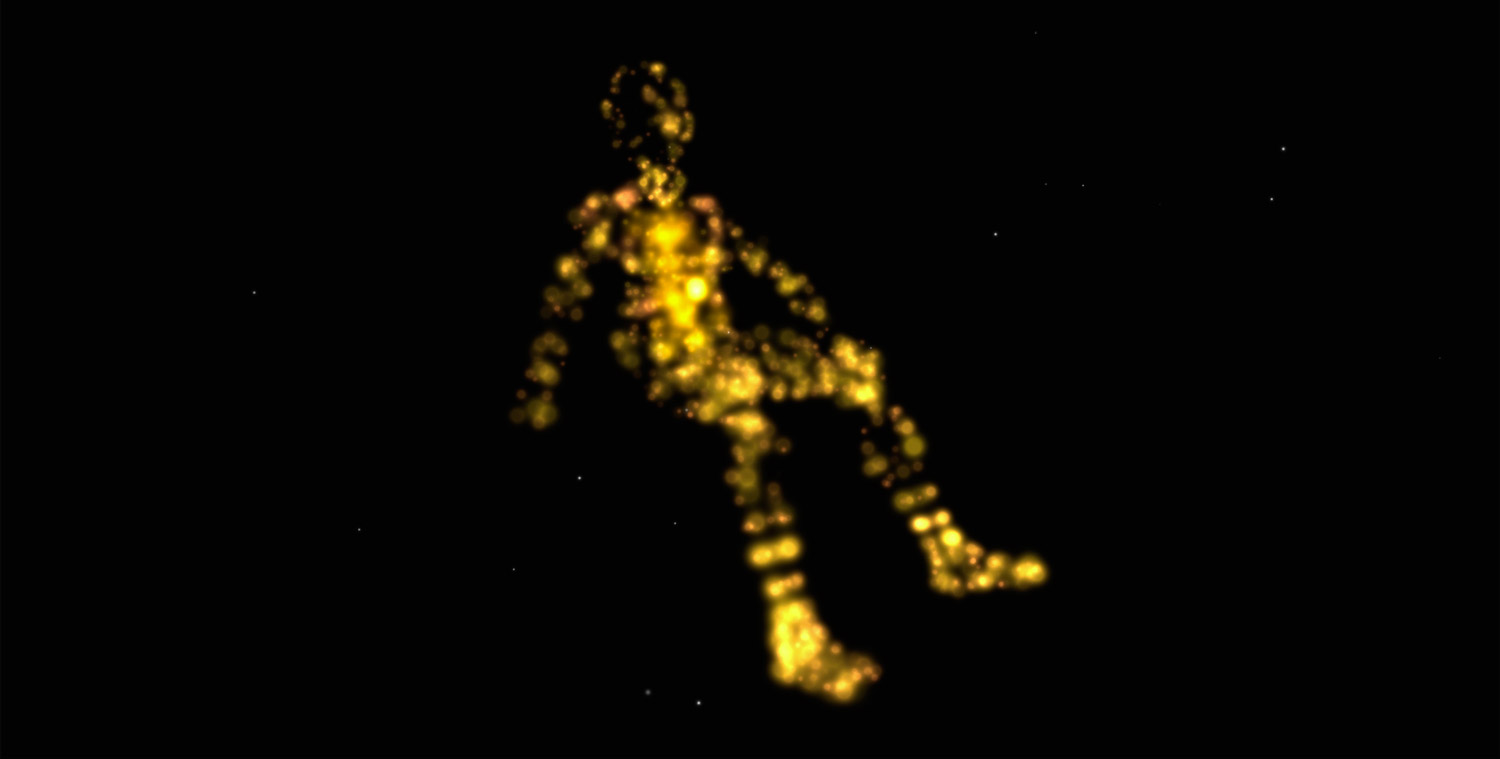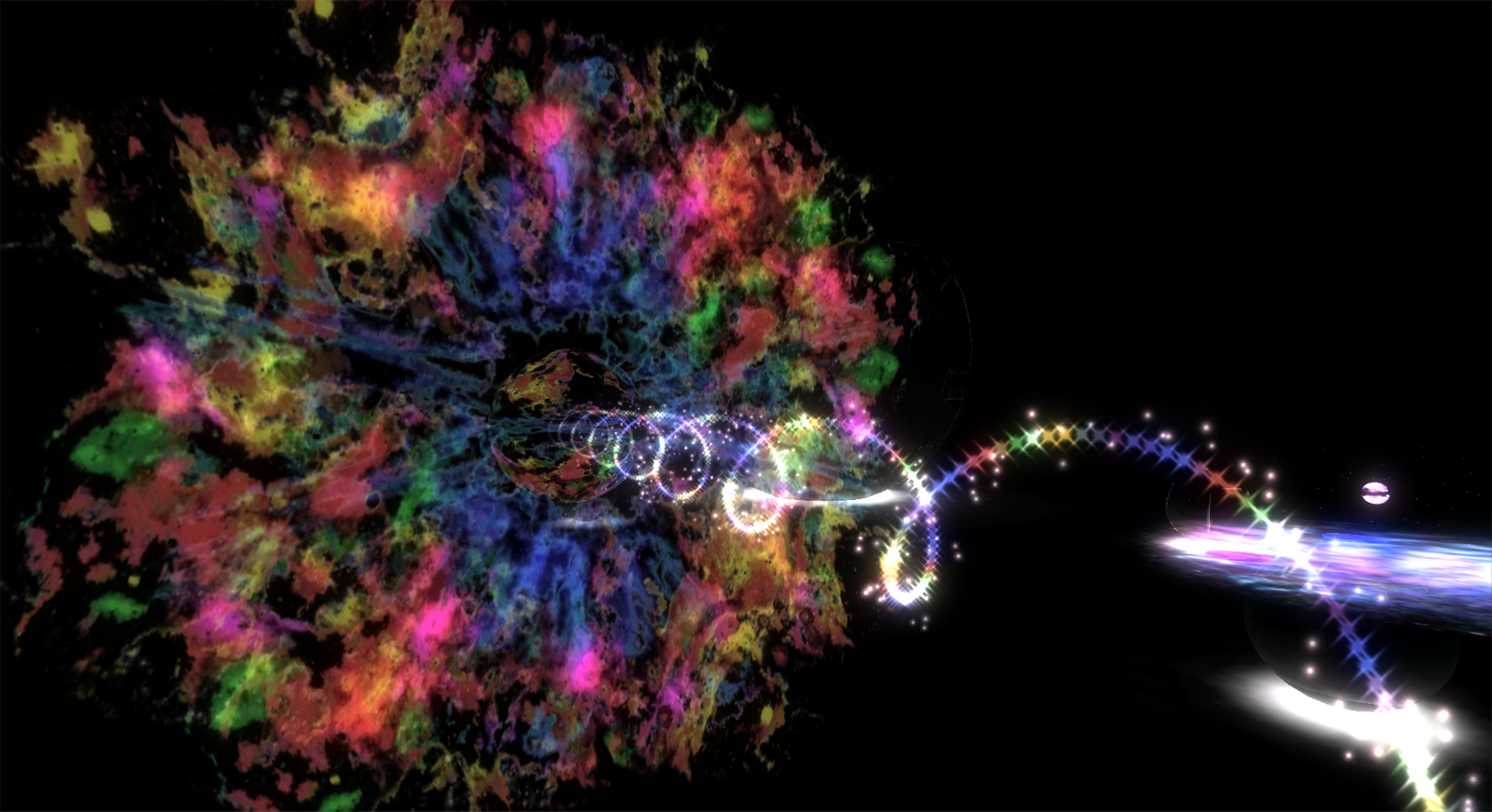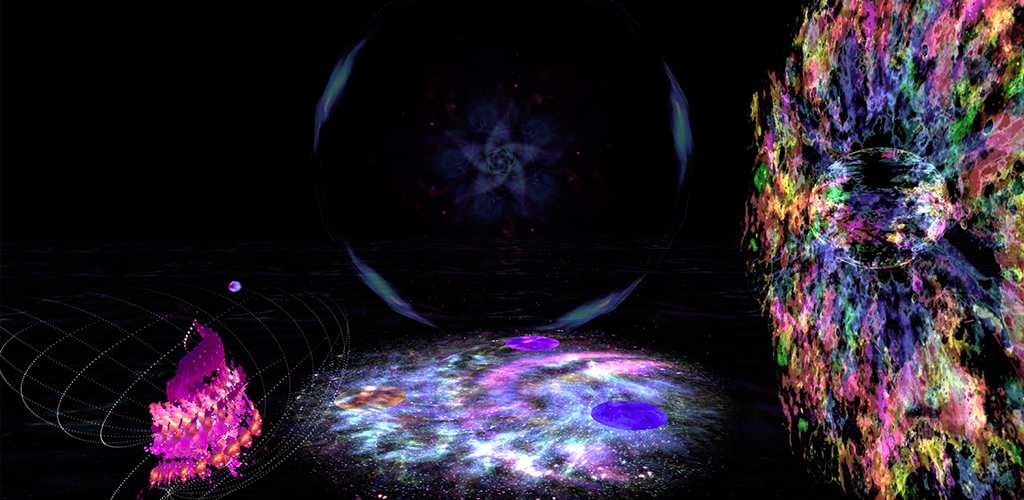Texas-based virtual reality developer and long time musician Aaron Lemke is at it again. His startup studio Unello Design just released two exciting new VR experiences onto the Google Play store that incorporates his own brand of music with relaxation methods and satisfying interactivity. The first demo is called Zen Zone, and the other one is dubbed Nebuland.
Aaron Lemke is well known in the VR community as the guy who created the beautiful experience known as Eden River. That demonstration put users on a relaxing trip down a tranquil river with animals from the forest hanging around. Lemke also developed the short interactive narrative Lunadroid 237 which takes place on The Moon in 1969. Now, his latest virtual reality experiences combine the technical knowledge that Lemke has built up over that last year or so with new music, producing awe-inspiring results.
[Spoiler Warning: the following paragraphs contain in-game experiences]
Zen Zone
As the Google Play description states, “Zen Zone is a peaceful guided meditation experience designed for Google Cardboard. Virtual reality has unlocked new ways of relaxing and calming the body. The experience starts with some guided breathing exercises in a soothing nature environment. Butterflies dance over the pond in front of you, sunlight shines down through gaps in the rocks above. The second half is an innovative, new approach to relaxing the entire body that is only possible in VR.”

Putting on the Carboard VR viewer puts the user in a comforting space with a quiet pond nearby and a tree stretch above. The wind blows across the rocks, and the sound of a female narrator tunes in. Birds chirp in the distance. This is a place of tranquility. The scene is meant for the person to relax, slowing them down. This method helps to forget about the worries of the day. The goal is to clear the mind; eliminating intrusive thoughts, letting them float away.
The soothing voice tells the person to pursue a calm mind. They are told to notice their breath; how it is cool on the way in, and slightly warmer on the way out. Users will inhale through their nose and exhale slowly out through their mouth. This puts them in tune with their body, which is often easily forgotten about when developing for virtual reality.
When I first tried out the demo, the tension and anxiety that I built up over the last few (stressful) days released. I felt a softness starting to seep in. Calmness surfaced during the demo as the virtual pond water trickled in the breeze while a fish swam through H2O molecules bonded together. Beautiful butterflies floated in the wind. One was red, and the other three were blue. An enormous tree stood above algaed rocks, reaching its leaves into the sky. Bright light shone down through the area surrounding me, and I could almost feel the warmth of the sun as the rays tried to absorb into me.
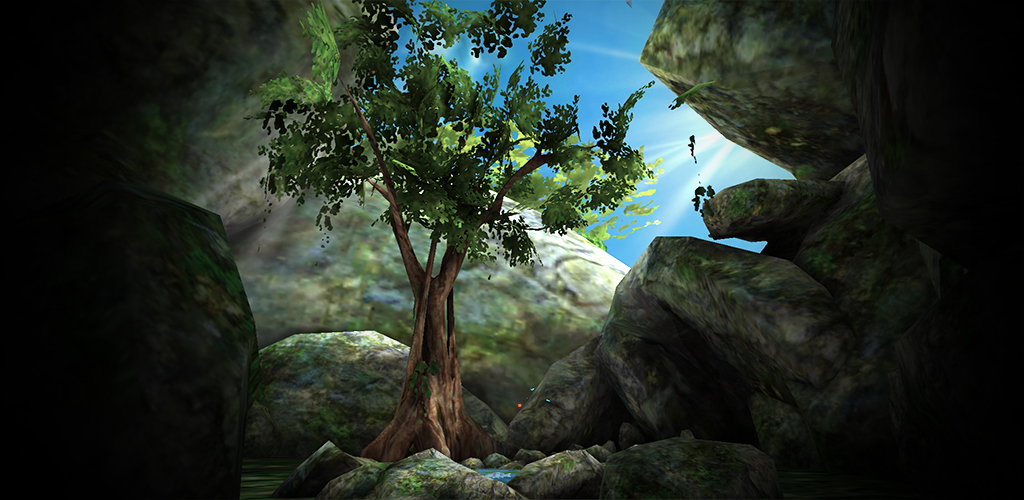
After a couple of minutes taking in the scene, the narrator asked me to close my eyes as the environment changed. I was transported to a place in space with stars hovering in the distance. She told me to look at my feet and imagine a warm glow radiating from within. Looking to the side showed gold energy orbs starting to appear. They formed an outline of a pair of feet with a glow spreading up through the toes. Again, I could feel the tension within myself releasing. Any tightness I had was slowly relaxing away. The orbs manifested like tiny suns, pulsing and flowing up through the body. It was like watching a universal being of energy being created before me.
Hitting the magnet on the side of the Cardboard VR viewer caused the virtual environment to fade away. Sounds of playful piano keys started to kick in as the music orchestrated the demonstration’s end. The whole experience was a fascinating way to relax while inside VR. The only issue that I encountered was the process of holding up the Cardboard headset to my face. I kept wanting to let go of the headset and focus in on the experience. Since Cardboard viewers don’t have a head strap, one must continuously stabilize it with their hands. A demo like this would fit better on Samsung and Oculus’s Gear VR, which has comfortable padding on the inside and includes a strap to keep the headset on. Luckily Lemke informed us that he “will most likely be launching these on Gear in the coming months, but no set timeline yet.”
Besides the platform that it was released on, Zen Zone did a great job at allowing me to release any anxiety that I was feeling that day. It floated on the tranquil side of the VR spectrum which is somewhat of a rarity these days. Being inside a virtual reality can be a freeing experience if the environment and interactivity is developed in the right way. Zen Zone gives people the ability to clear their minds, and it does so in a way that includes the body as well. Not to mention, the cost of the app is a meager $1.99, and it can be played over and over.
Nebuland
According to the Google Play description, “Nebuland is a music based puzzle experience incorporating original music by Aaron Lemke. Enter into a virtual world of morphing 3D sound sculptures, and solve the puzzles within. Set in a colorful and surreal landscape, Nebuland is a continuation of aesthetics and ideas first expressed in Opera Nova the free Fantasia-inspired demo from Unello.”
This experience is my favorite of the two because of the in-depth interactivity and sound design. The colorful fractal patterns streaming into each other kept me busy for a while. Having bright visual graphics on a black background works incredibly well in VR, and this demo captured the beauty of that.
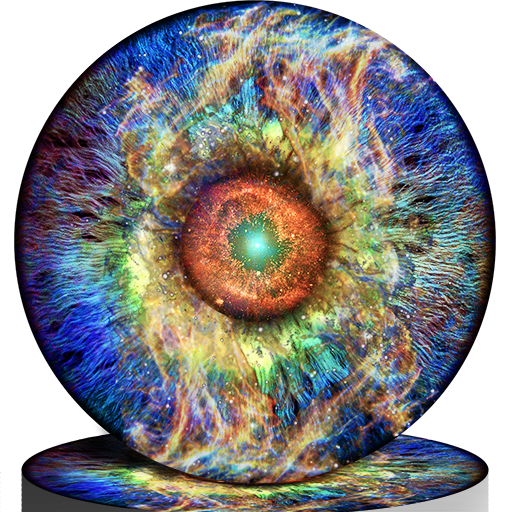
The initial thing I saw after loading up the app was four glowing pink orbs circling around me. Off in the distance was the Unello Logo and text sprawled across the environment telling the person that this experience is “best enjoyed with headphones.” Intense, spacious music added to the level of immersion while staring into the center of the slowly growing balls of energy. More text on the other side of the environment told me to “slide [the magnet] to interact.”
Nebuland kept me re-playing the demo repeatedly over the course of an hour. I enjoyed watching the pink orbs shoot light rays out of the middle while clouds of colorful patterns revolved around them. It was a captivating “loading scene” for the demo, to say the least. The clouds seemed like glass in nature and swirled together around the center glows.
This scene launched me into another part of the universe after sliding the magnet for the 1st time. Black objects reminiscent of Earthly globes sat on a dark, never-ending platform around my new environment. One of the objects was half-way stuck into the ground as if it crashed into the surface many millenniums ago. Two red and purple spaceships orbited around subtly in the distance.
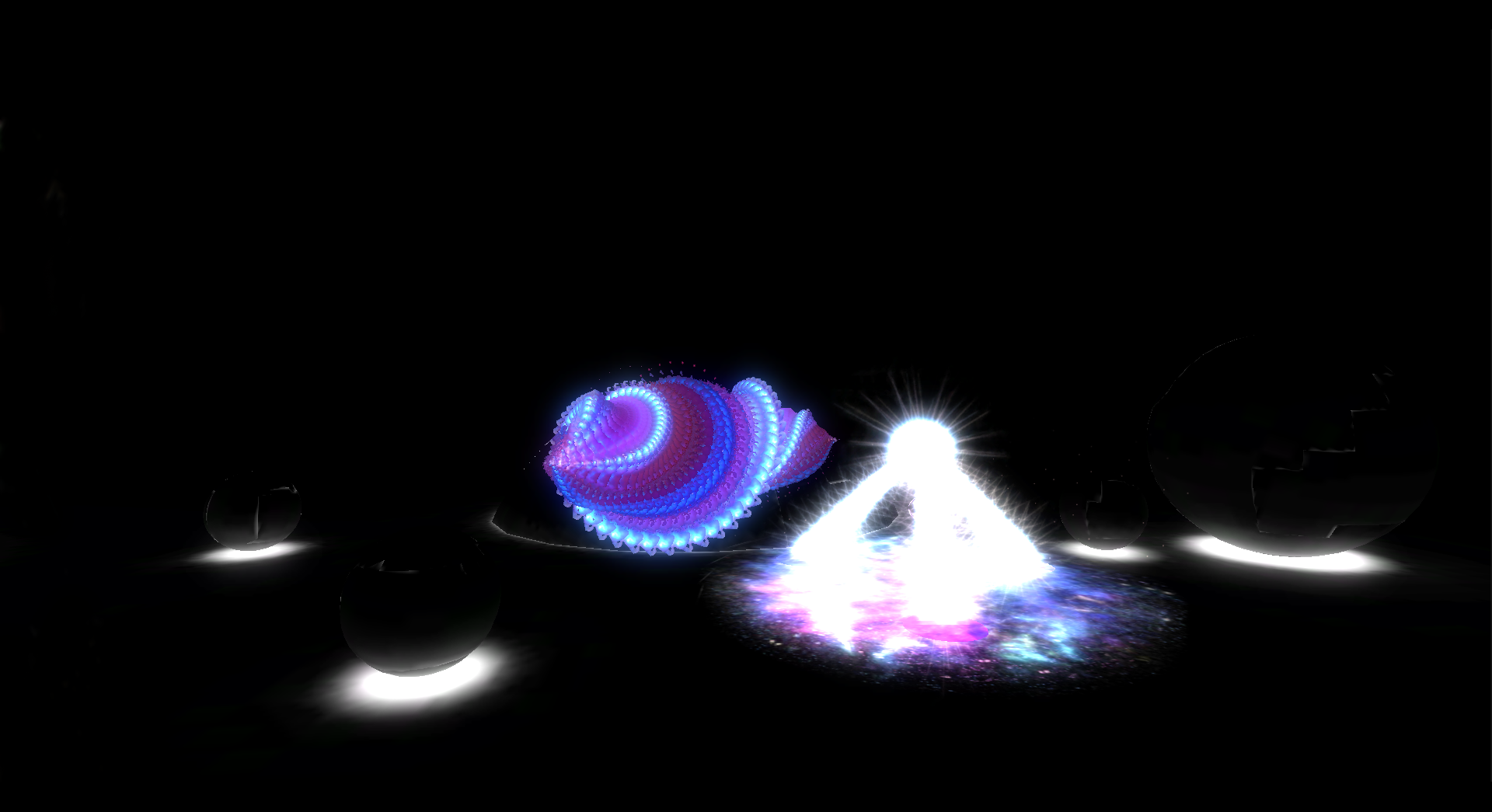
To the side of me was a complex spinning galaxy that looked similar to an animated tabletop with thousands of stars twinkling within it. Some of the stars floated out of the main rotation hovering elegantly into the space nearby. Blue, purple, pink, and white stars whirled together like food coloring dropped into a fluid medium. Wherever I looked was a milky white, marble-like object with purple triangles trailing behind it. It was my center of focus which followed the tracking movements of my head. The swirling galaxy platform had three embedded circles that rotated within the galaxy. Sliding the magnet caused flowers to grow out of the stars. As the organic plants sprang up from the galaxy, strong instrumental music accompanied it. I kept wanting to grow a forest, despite the limit of only being able to sprout three at a time.
The key to the puzzles in this game are syncing things up. After figuring out what to do on the galaxy platform, pillars of light and energy shot up, meeting at a point, forming a pyramid of energy that opened up a rift in the virtual universe. Through another dimension a colorful psychedelic slug-like creature crawled through the metaphorical doorway and ventured into a multicolored portal that appeared out of nowhere. It had spiny, fractal edges and moved with fluid motions through the space. This was totally unexpected, and I could not believe what was occurring in front of me. This portion of the experience was a delightfully visual treat for the eyes. I repeatedly fired up the Nebuland demo just to get to that part over and over again.
After the slug from another dimension found its new home, the twirling clouds of colors it crawled into rotated magnificently. Hitting the magnet would cause a spiral of light to emerge out towards a living, pink object that would open its many wings circling around. The edges of the “being” leaved a trail of white dots interweaving together. Sliding the magnet while looking in that direction shot orbs up; similar to those seen out at the beginning. Again, connecting and syncing up the sequences was a key part in figuring out what to do. From there, fireworks exploded in celebration of the puzzle being solved.
Nebuland is an enjoyably experience that is totally worth the purchase. It only costs $0.99 and provides for continuous gameplay. It’s the price of a song on iTunes or Amazon, and is much more interactive. The visuals are stunning. The music fits well in the virtual environments; created by developer Aaron Lemke. His musician skills are prevalent throughout all of his demos, especially in Nebuland. The demo is gratifyingly interactive, providing unique ways to solve challenges the entire way through. Click on the widget below to purchase this entertaining experience developed by Unello Design. It will keep you entertained for hours on end.

